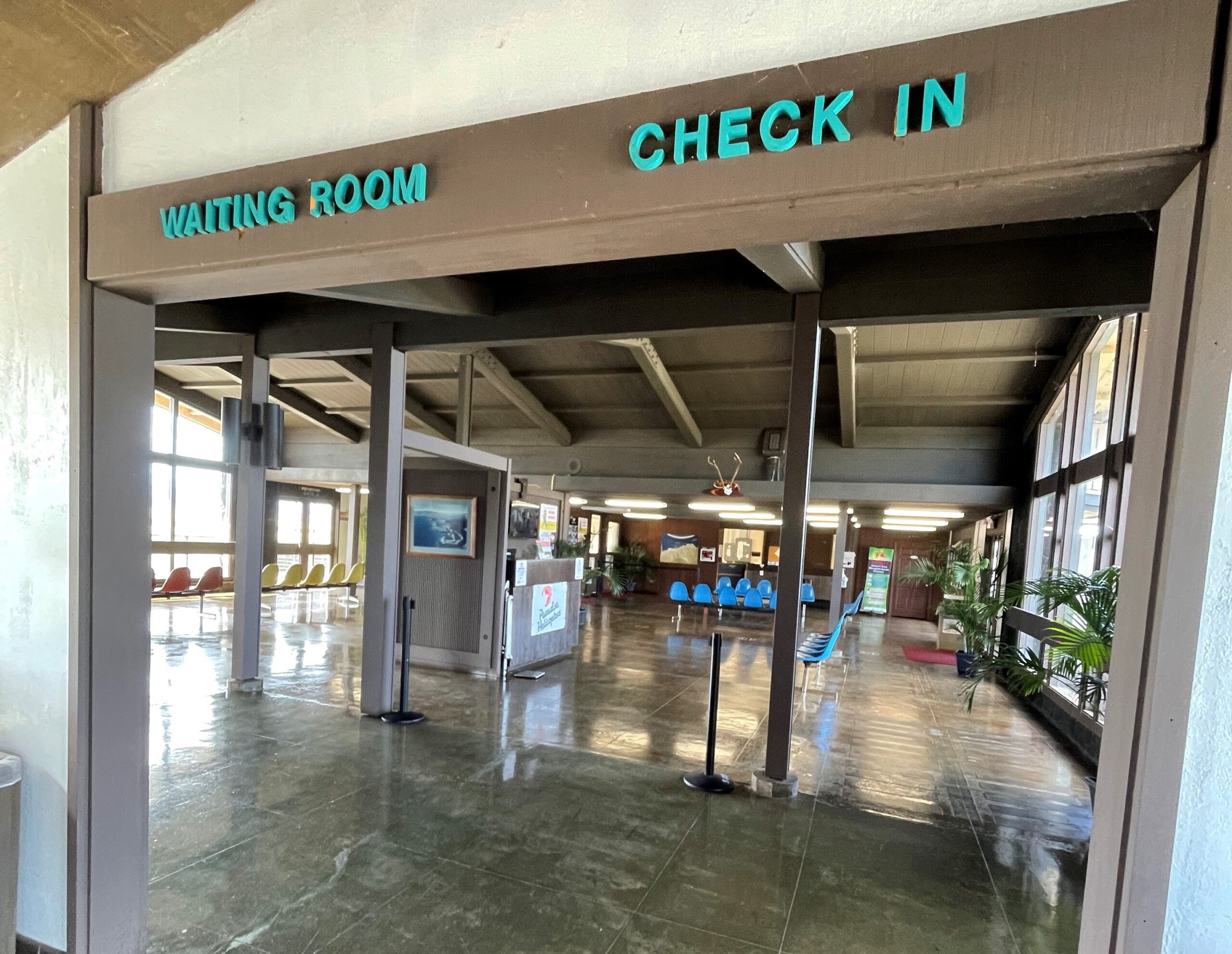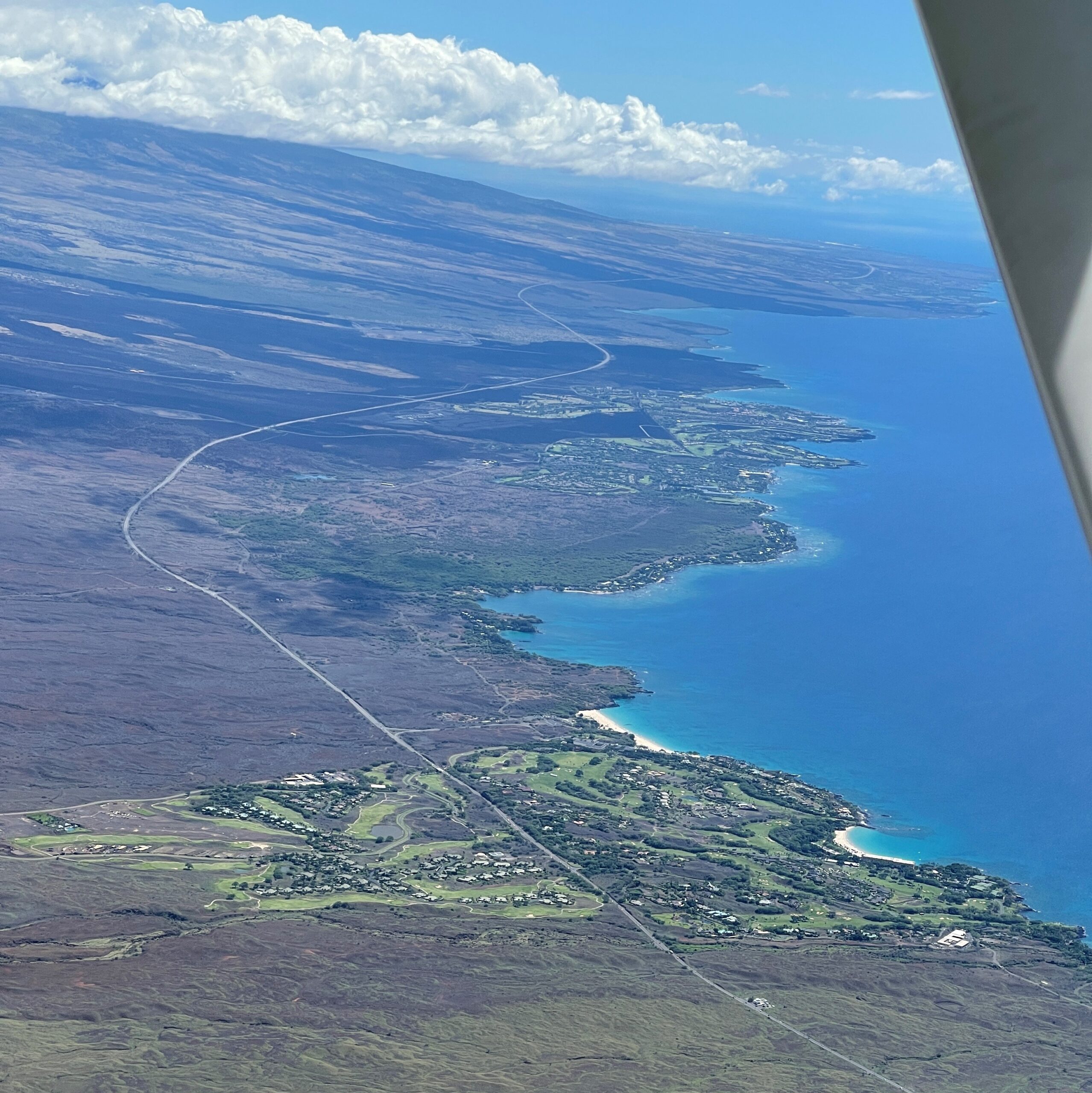(This is the last of a series of travel blogs by Justin Whedbee, our co-founder and Executive General Adjuster, detailing his adventures in the Hawaiian Islands in the summer of 2021 as the COVID lockdown continued.)
This final episode includes my favorite trip during COVID. As noted in the last episode, Hawaii County decided that once you had an approval for work travel, it was good for thirty days. This was tremendous and made scheduling work travel much easier.
During the pandemic, I made a few trips to Kona via commercial flights on Hawaiian Airlines and, like trips to the other islands, the airports and planes were practically empty. While the emptiness of the terminals made moving through them more expeditious, there were still the challenges of parking, traversing security, and waiting for your flight to depart.
This particular trip was very different – and fun. I mentioned when writing about Molokai (Episode 4) that I am also a pilot. At the time, I had partnered up with another pilot in Hawaii, who graciously allowed me to fly his beautiful Cessna T206H (aka “Stationair”) when it was available and matched with my schedule. I had received a new claim for a multimillion-dollar fire loss in Waimea, near the north end of Hawaii Island. I contacted the insured and learned their office was less than a mile from the Waimea-Kohala airport, and they gladly offered to pick me upon arrival.

The Stationair, HNL, August 2021
I planned the trip and headed to the airport on a Tuesday morning. I quickly pulled the airplane out of the hangar, completed a preflight check in about 15 minutes, and took off for Waimea. Flying a small plane in and out of a large international airport can be challenging, but it is always exciting traversing the airport with the large commercial planes. The general aviation hangars at Honolulu airport are near the cargo area, and it was fun to follow around the big birds.

Cargo Planes, HNL, August 2021

Hanauma Bay en route to Big Island, August 2021
Upon departing, I followed the Freeway Two departure route, which takes you right across the middle of downtown Honolulu and then out over the east end of the island by Hanauma Bay. From there you fly across a portion of the island of Lanai, then directly over Kaho’olawe, the uninhabited and smallest of the eight main volcanic islands, towards the Big Island. This route is just south of the island of Maui. By the time you’ve crossed Kano’olawe, you can see the northern end of Big Island in the distance.

Mauna Kea and Mauna Loa loom large in the windshield in flight towards the Big Island, August 2021.
My total flight time was one hour and 36 minutes; if you include preflight, run up, and waiting to depart, my total travel time was two hours and ten minutes. By contrast, if I had flown commercial, I would have had to arrive at the gate 45 minutes prior to departure, take a 50-minute flight, add 15 minutes to get to a rental car, and another 60 minutes of driving time for a total of two hours and 50 minutes. So not only was flying myself a lot more fun, but it was also a time saver as well.
In addition to the time savings, here are some other pluses of traveling this way:
- No early arrival at the airport needed
- No TSA line
- No mask requirement
- Inflight coffee was excellent (Made it myself, that morning)
- Inflight meal was also great (Steak, rice, and veggies)
- Leaving when I wanted to, rather than on someone else’s schedule
- Arriving right near the loss location

Arriving at Waimea – Kohala Airport, August, 2021.
Upon arrival in Waimea, I made a nice crosswind landing, parked the plane and called the insured. They arrived in about ten minutes. During that time I walked through the terminal, and never saw another person.

The empty terminal at Waimea – Kohala Airport, August, 2021.
The next four hours were spent traversing a large parcel of land, inspecting all the fire damages on the property. The loss involved a wildfire spread over 38,000+ acres of ranchland, with damage to several structures and various pieces of equipment. When we were done, the insured dropped me back at the airport. Anyone who has ever worked fire losses knows that afterward you smell like smoke. I had brought a change of clothes and changed at the airport to lessen the odor and make the flight back more comfortable. (I guess another benefit of flying alone is that I didn’t have to worry about the other passengers having to deal with the smell of smoke.)
I loaded up all my equipment in the Stationair and departed Waimea. Upon departure I then completed an aerial survey of the fire damaged property before heading back to Honolulu.

Wildfire damages seen from above, near Waimea, August, 2021.
The return trip took much the same route; however, as I approached Oahu (Honolulu), ATC gave me vectors out over the water instead of across downtown again. I was given clearance to land on runway 4R. To do so, I crossed over runway 8R, where a United 777 had to wait while I slowly crossed over before they could depart.
Putting an airplane away is a much easier process than all the preparation for a flight origination. Within 10 minutes of turning the engine off, the plane was snuggled away in the hangar, and I was headed home for a much-needed hot shower.
By now, you can see why this was my favorite trip during COVID. While working in Hawaii presents many unique travel and planning challenges, and doing so during the pandemic was harder, the chance to pilot my own flights made it a little bit better. Plus, the views are great.
I hope you have enjoyed this glimpse into adjusting claims in the Hawaiian Islands. I hope to make some additional posts about unique claims and events I have encountered in my 27 years in this industry. Hope you will tag along for those as well.
Mahalo.




